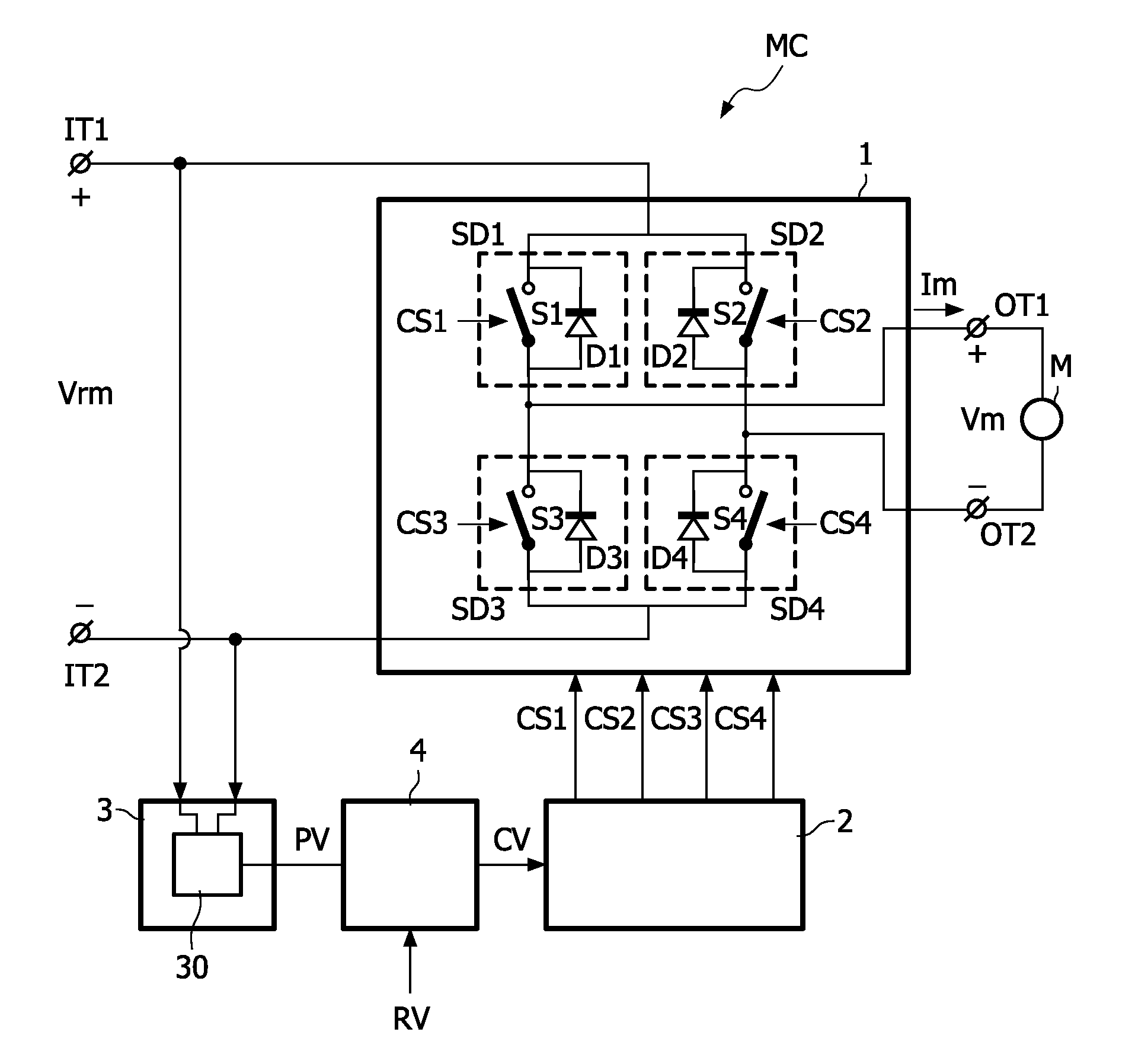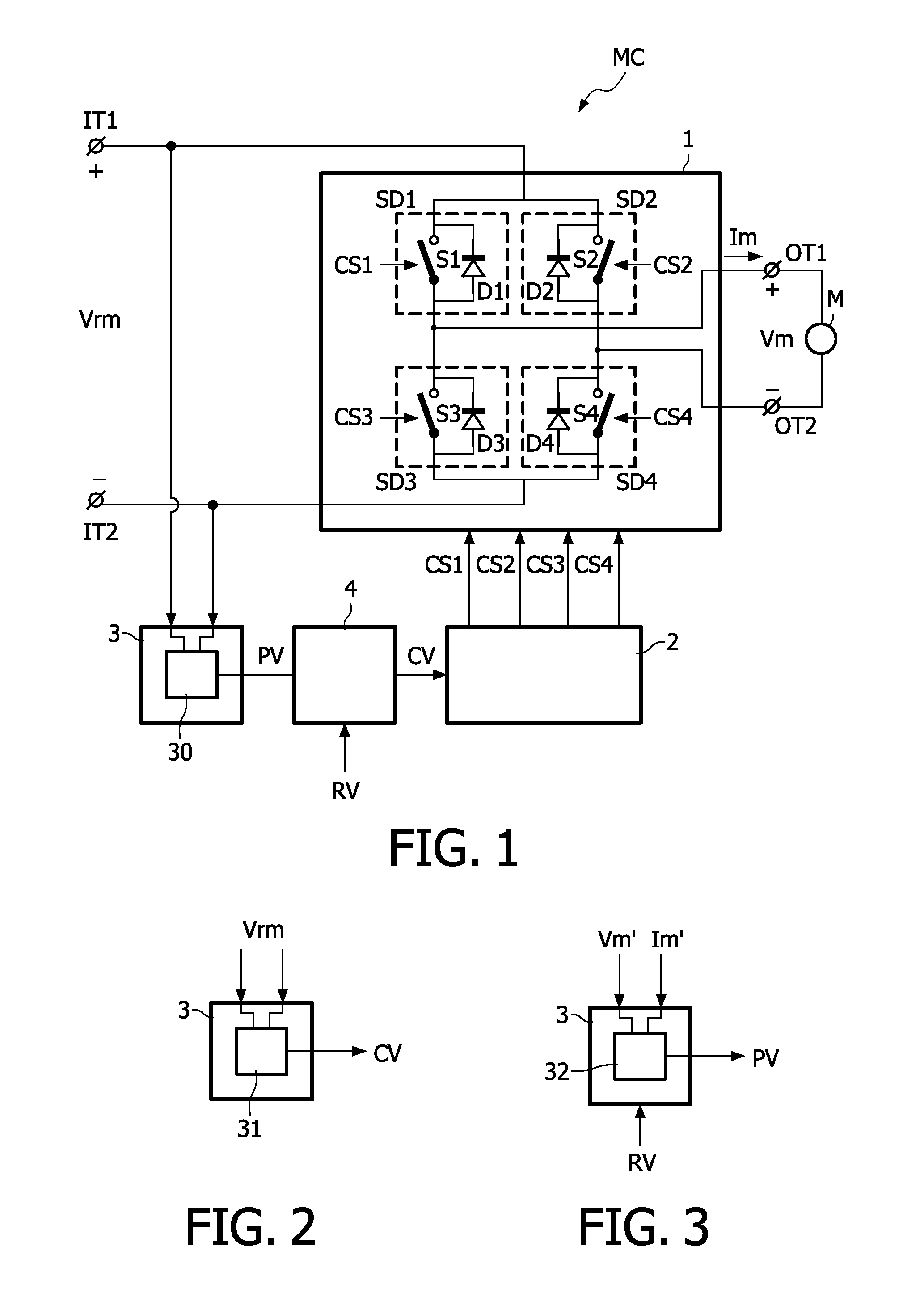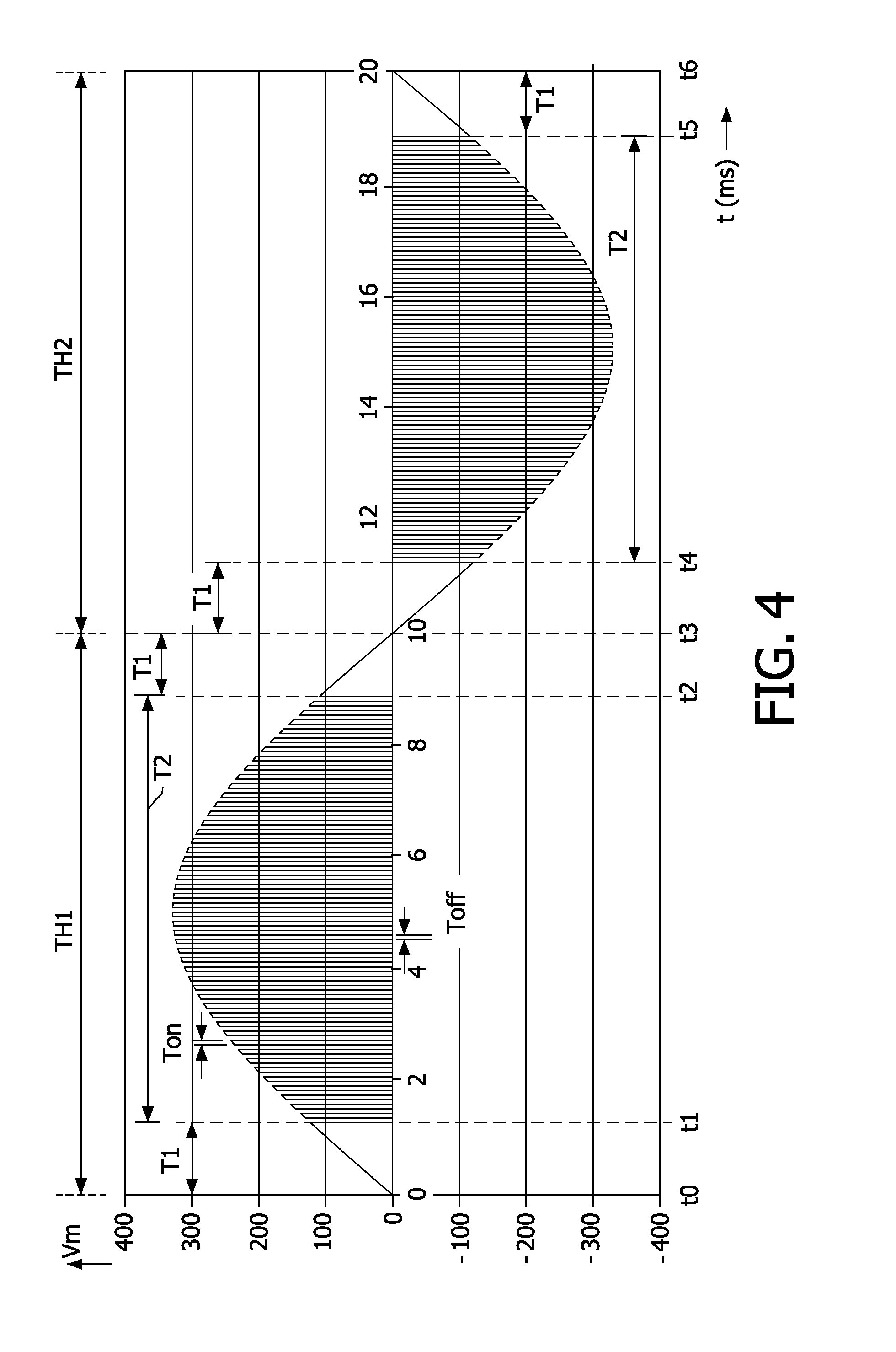Controlling a power of an electrical motor
a technology of electrical motor and power supply, which is applied in the direction of electronic commutation motor control, motor/generator/converter stopper, dynamo-electric converter control, etc., can solve the problem of reducing the life of brushes, and achieve the effect of prolonging the life of brushes
- Summary
- Abstract
- Description
- Claims
- Application Information
AI Technical Summary
Benefits of technology
Problems solved by technology
Method used
Image
Examples
Embodiment Construction
[0024]FIG. 1 schematically shows a circuit diagram of an embodiment of a motor system which comprises a motor control circuit MC and a motor M. The motor control circuit MC comprises input terminals IT1, IT2 to receive a rectified input voltage Vrm. Preferably, the rectified input voltage Vrm is an unbuffered rectified mains voltage. With unbuffered is meant not smoothed by capacitors. The motor M is coupled between output terminals OT1, OT2 of the motor control circuit MC.
[0025]A switching circuit 1 is arranged between the input terminals IT1, IT2 and the output terminals OT1, OT2 to intermittently couple the output terminals OT1, OT2 to the input terminals IT1, IT2. If the switching circuit 1 is in the on-state Ton (see FIG. 4 for the associated on-period of time), the rectified input voltage Vrm is coupled via the switching circuit 1 to the motor M to supply the AC drive voltage Vm and the drive current Im to the motor M. If the switching circuit 1 is in the off-state Toff (see F...
PUM
 Login to View More
Login to View More Abstract
Description
Claims
Application Information
 Login to View More
Login to View More - R&D
- Intellectual Property
- Life Sciences
- Materials
- Tech Scout
- Unparalleled Data Quality
- Higher Quality Content
- 60% Fewer Hallucinations
Browse by: Latest US Patents, China's latest patents, Technical Efficacy Thesaurus, Application Domain, Technology Topic, Popular Technical Reports.
© 2025 PatSnap. All rights reserved.Legal|Privacy policy|Modern Slavery Act Transparency Statement|Sitemap|About US| Contact US: help@patsnap.com



